Latest News From Smidge Wines
Natural - accidental - authentic wines and vineyard expression (the sense of place)

Over the years, I have read articles, spoken to people and tasted wines associated with the natural (natty) wine movement and have slowly picked up a spectrum of knowledge that I keep in the back of mind during vintage and the winemaking process. Wine is a wonderful thing and whether you are associated with the industry or a consumer, trying different varieties and/or styles of wine is a fascinating experience. Over the years, I have tried a broad range of “natural” wines and many were memorable for the right reasons, while some unfortunately were not!
The three names appear in the heading because there is no universally accepted name or definition. “Natural” wine is the most common name, and a wine under this banner can be described as one that comes from fruit grown sustainably, picked at moderate sugar levels to avoid excessive alcohol, made with as little or no manipulations or additions as possible, be fault free and ultimately exhibit characters that only reflect their origin. It has been seen that a number of those who align themselves to this regime suggest that the wines made by other more “conventional” winemakers are not “natural”. Grapes by sheer definition are natural and so a resultant wine, too, should be described as natural. I agree that in some situations, with the use other processes/aids and the addition of other compounds, one may describe the resultant wine to be very different to what you may expect or for arguments sake, “unnatural”.
Myself, as a winemaker, like many others do strive to minimise our inputs during the winemaking process and therefore a number of Smidge’s wines have no major adulteration during the winemaking process, such as acid adjustment and only see sulphur dioxide at moderate to low rates of addition after primary fermentation (white wine) or malolactic fermentation (MLF, where malic acid is converted to lactic acid – red wines), which may occur several months after vintage and then a slight adjustment at bottling.
If fruit is picked in pristine condition at optimal ripeness, with good flavour and lively acidity, fermented cleanly, pressed off and put to physically and microbially clean oak, it is amazing how vibrant and clean a wine can be after a number of months without any SO2 addition to help protect against oxidation and microbial spoilage. Once MLF has completed, then I do rack the wines from barrel and add a moderately low level of SO2 to protect the wine. We have come this far, there is no point in ruining everything now.
Great wine is made in the vineyard and then as winemakers, we have two options, respectfully guide the fruit through the process maintaining quality or alternatively, just be lazy and ruin the wine, plainly and simply. I know which I prefer. As a winemaker, our goal should always be the methodical and intelligent nurture of the varying concentrations of site-specific compounds in the fruit to detectably pleasing compounds in the resultant wine.
Another suggested name for these type of wines is “authentic” wines, which leans towards the fact that the fruit used in these wines must have come from vines grown organically and/or biodynamically. I can appreciate this concept to a certain extent, although many vineyards, especially in warmer regions, are grown very closely to organic principles, producing high quality fruit (such as our own Willunga block) although the conversion to organic certification is never pursued due to the time required to do so or long term economic reasons. Therefore, these vineyards should not be dismissed as not being able to produce high quality wines.
At the end of the day, vineyard expression (terroir) and fruit quality is not necessarily related to minimal intervention. Healthy, balanced vineyards grown in desirable conditions will result in high quality fruit that expresses its origins, which in turn leads to wines with great varietal and site expression, when picked in the “optimal” window and made with consistent winemaking techniques. These techniques will be a mixture of those described as modern conventional and those based on Old World ideologies. The critical aspect (for me at least) is that all of the practices implemented are thoughtfully and carefully executed to maintain the purity of fruit and the sense of place, aided by the subtle additions of sulphur dioxide (SO2) at critical points of the winemaking process to minimise oxidation and chemical reaction that unnecessarily produce undesirable compounds. SO2 is produced naturally by yeasts during fermentation and subtle additions later in a wine’s life are not taboo. The majority of small to medium proiducers are very conscious of their winemaking and in this day and age health-conscious consumers, so they are not heavy handed with their SO2 additions. More commercial wineries, relying on more consistency of product do typically (not always) add higher rates of SO2, although the levels are not high in the scheme of things, especially compared to the levels used in the dried fruit industry.
All in all, no matter how you make your wine, if the fruit is high quality, in balance and in sound condition and the winemaker looks after it during fermentation and the wine during maturation, then the bottled product should be of high quality and a joy to drink. For the consumer, wine is objective, much like food, films, music, art etc. The list is long and these are the things that help the world go round.
Cheers
Matt
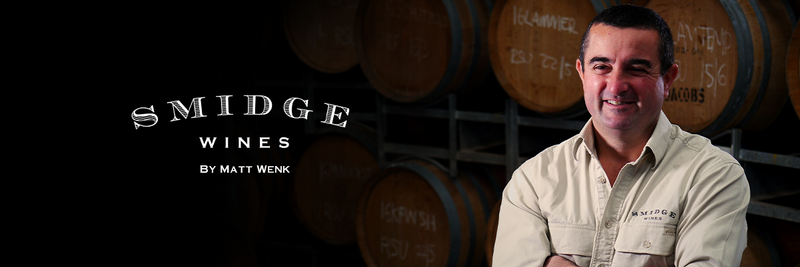
Matt Decanted? Watch out for Matt's latest podcast - Coming soon

In a second new announcement in as many weeks Smidge Wines founder and winemaker Matt Wenk will be hosting and publishing a new curious and interesting Podcast Series – Matt Decanted. Featuring a number of industry icons, winemakers and lovers of food & flavour Matt and his guests talk about all things including wine, where their love of the industry started and the journey there (& much more!).
In his first series ‘on tour’ Matt has toured the state from cellar doors to small goods chatting to South Australian champions such as Corrina Wright, Sam Scott & Andy Coppard as they share stories and the microphone. Watch out the first podcast is due to be published in early November.
Sneak Peak into Updated Houdini Range
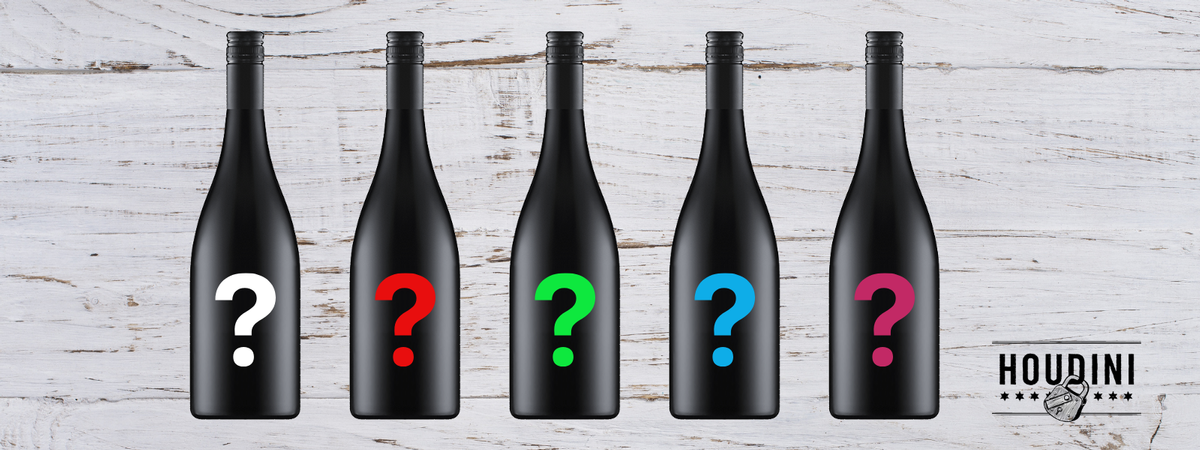
Matt Wenk, Smidge Wines founder and winemaker offers a sneak peak into the new Houdini range.
Today, Matt Wenk, Smidge Wines founder and winemaker provided a sneak peak into a refreshed wine label for is acclaimed and popular Houdini Range.
“Houdini is one of our original brands and has a firm place in our heart – modernising our original label was never going to be quick or easy ” says Matt. “Our first release was a creatively named ‘2006 Red Wine’ which was actually our first Shiraz Zinfandel. Much has happened since then, with the range expanding regions, varieties and styles – lead by the popular McLaren Vale Shiraz and Cabernet, a McLaren Vale Fiano, Adelaide Hills Sauvignon Blanc and Adelaide Hills Rose.
The journey for refreshing the label has not been an simple one, with more that 6 different attempts over recent years for an update. So what made this one different? Matt says he and wife Trish picked this design as it carefully balanced the heritage of the label with a modern twist.
Day in the life - Behind the Scenes
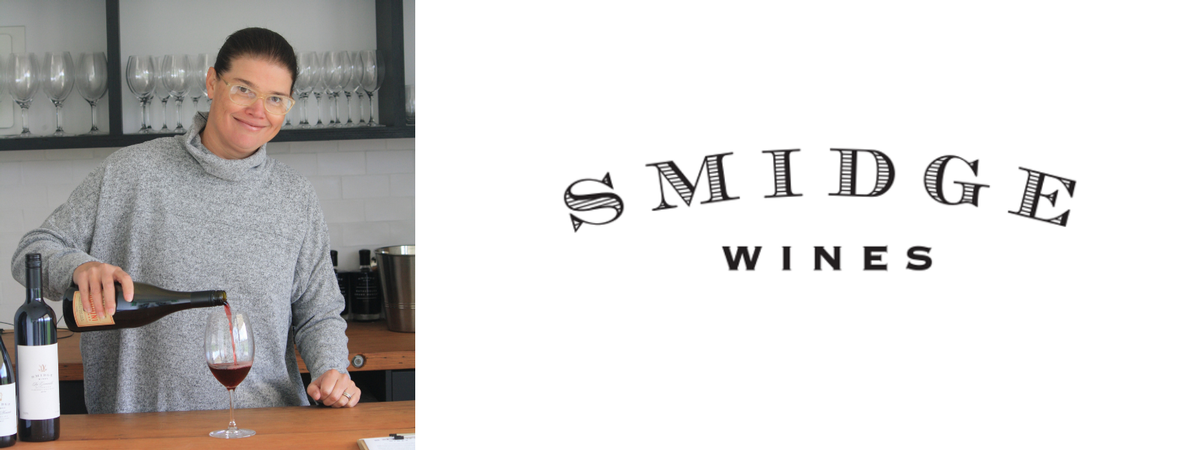
For something different, this week we sit down with the ‘other’ half of Smidge Wines – co founder and GM Trish to talk about what life is like behind the scenes at a small passionately Boutique Winery.
To kick things off we ask Trish what it’s like living and working with Husband and Winemaking legend Matt Wenk? “busy” she says with a smile. Matt has a relentless work ethic and near enough is never good enough. Sadly for me that doesn’t extend to his sock drawer.
“I think being involved in the industry for 16 years now I am a lot more understanding of the demands and realities of the commitment it takes to make truly great wine.”
What is Matt’s worst habit? ‘That one is easy -calling me when he’s already ½ an hour late to tell me he’s going to be late. It drives me crazy.
Is being in the wine industry and having your own company are romantic as it sounds? Yes & No 😊 With a back ground in Corporate IT if I was ever going to return to my primary production roots the order of wine, from vineyards to bottling would be it. There is something very satisfying creating something tangible which can provide joy and be shared among someone’s best friends on a favourite occasion. The industry is collaborative in a way that still inspires me (very different to IT), and there is something mesmerizing about sitting out on the deck gazing across a vineyard on a summer afternoon.
There is a flipside of course which can be the uncertainty of seasons and weather or unexpected market changes – but even these situations and challenges lead to something new and exciting that would otherwise remain undiscovered.
Pedra Branca - Muse or Surf Break?
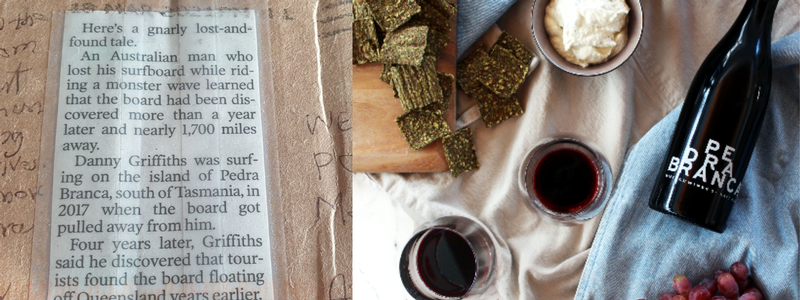
As a keen surfer it doesn't take much to persuade Matt to watch a documentary on big wave surfing and the minute he saw the break at Pedra Branca some 25km off the coast of Tasmania in the Southern Ocean the inspiration for our project series was born.
In between breathtaking images of big wave riders taming an impossible beast was a story of spectacular, unbridled forces of nature, seen at the rocky outcrop and the unique environment that has been created.
Taking the inspiration from the mystery and power of the location itself, our project series takes what Mother Nature delivers from fruit that is so pure that all of the wines are made with minimal intervention and proceed with wild fermentation.*
Our philosophy for these ultra small batch 'project' wines that are not produced at any commercial level. They are wines that push the boundaries of what is possible with alternative varietals grown in South Australia, or alternative winemaking processes using well-known varietals such as Sauvignon blanc or Grenache. We work to express the rawness and beauty of mother nature that is delivered vintage to vintage and to see what is possible.
You will notice a nod to the topography of the Pedra Branca (meaning white rock) on our label with its name printed in the shape of the main rocky tower called Eddystone Rock.
2021 Winter in the Vineyard - A snapshot from McLaren Vale
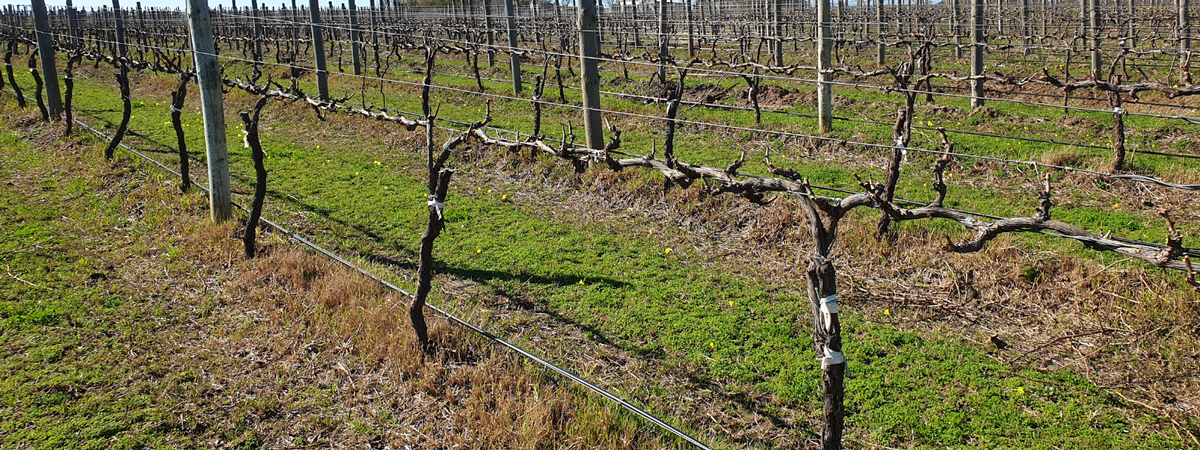 With the flurry of vintage over, the cool of winter is a time to slow down, catch up and regroup. We take the opportunity to sit down with Smidge Founder and Winemaker Matt Wenk at the cellar door to catch up with his take on what this means in the vineyard and for the season ahead.
With the flurry of vintage over, the cool of winter is a time to slow down, catch up and regroup. We take the opportunity to sit down with Smidge Founder and Winemaker Matt Wenk at the cellar door to catch up with his take on what this means in the vineyard and for the season ahead.
As Matt points to the vineyards outside he tell us "Our vines in McLaren Vale have been dormant for a number of weeks and the task of pruning off last season’s growth in order to shape the vine in readiness for another growing season, is well underway".
While I've never really thought about it & it now seems obvious, he goes on "Pruning is a vineyard activity of solitude. In many ways this is not a downside, although very much a positive. Each vine requires evaluation and to prune well, one needs to focus on attention to detail, ensuring correct bud numbers, shape and spacing"
As our conversation continues Matt comments get a little more t move towards what is next in store "Throughout the growing season, a vine requires soil moisture to help in photosynthesis, the process where basically, solar energy helps convert carbon dioxide into carbohydrate (distributed to the fruit and wood tissue) and oxygen. Once the fruit is picked, this process continues, and these carbohydrates are translocated to the wood tissue of the vines. If irrigation is available, it is often applied to a vineyard post-harvest, especially if the latter part of the growing season has been dry. This irrigation provides the soil moisture for the photosynthesis and subsequent carbohydrate production that is then stored in the vine before dormancy, in readiness for the energy required for budburst and early growth stages of the following growing season.
Over recent years the total rainfall through winter to early spring has been a bit up and down, whereas so far this year in Willunga where the estate vineyard is, our annual rainfall to the end of July is well over 400mm, compared to the average to the same time of 295mm. The soil profile is full, which will help set up the vineyards for a great start to the coming growing season.
Akeringa - First Flagship Cabernet from Smidge Wines
This is the extension of the trial that started with the 2017 Cabernet. To select a parcel of Cabernet from the estate block, put it into 100% new French oak and see how far we can push it.
The vineyard in Willunga was attached to a small winery that shut down many years ago, which was called Akeringa. The sheds have been used as a mechanics workshop since, although you can see where the winery drains have been filled in with concrete. When I was the winemaker at Two Hands Wines, a large portion of the Cabernet was sold to them and over a number of years some of the fruit ended up as the base for the Aphrodite Cabernet sauvignon and so I have always known what the block was capable of. Hence, I have being quietly trialling a few things over the years and now here is the birth of the Akeringa Cabernet sauvignon.
No fancy winemaking tricks here. This parcel was made in the same way as the 2018 La Grenouille description, except that the chosen parcel went to 100% new extra tight Cadus Hogsheads.
To access a pre-release allocation please click here.
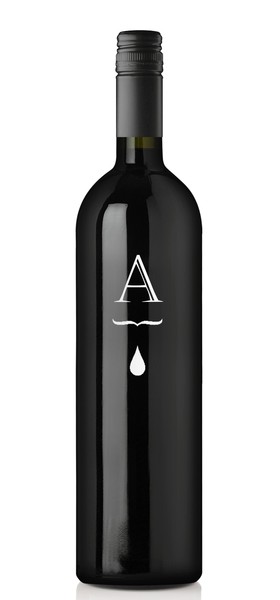
What are your Cellar Rules?
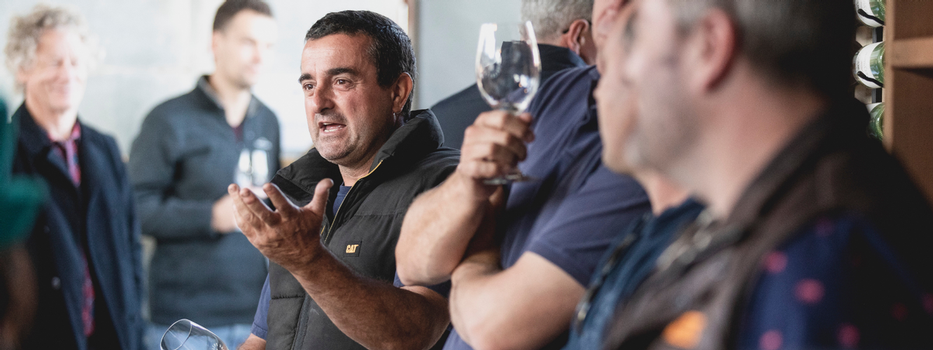
As a winemaker, and long before the Smidge brand was a reality, some household rules needed to be crafted around our cellar that avoided any unnecessary…let's say "surprises". While most of the wine in the house is consumed with family and friends – there are vintage hours, travelling, and wine dinners when I was not around to chat about a food and wine match, or if a particular bottle was perhaps best left unopened.
Equally on a wintery afternoon long before we were married (& before smart phones and google were a thing) at my now parents-in-law’s farm – my wife & her sister opened an old, and what they considered a somewhat unimpressively labelled red wine to sip over a game of cards in front of a fire. Put it this way, to date they’ve still not been able to replace that bottle – at least both will attest it was delicious!
With that memory indelibly etched in their history we decided household guidelines might be useful. Now we both consider our cellar marital property and what is mine is hers and vice versa - however every now and again there is a professional prerequisite for certain bottles not to be opened on a whim or at least so I could taste it.
We discussed having a rack that was a "free for all", anything in it could be taken, opened, cooked with, we talked about knowing vertical sets, specific vintages, or collected wines that maybe should not be in the racks of first reach. We discussed further study – not my best suggestion.
We decided these were impractical and would lead to nothing being taken from our cellar for 6 months a year. While our cellar is modest – like all cellars – it is at it’s best when it is used – that means a bi directional flow – as many wines that go in should also go out!
So we ended up with a simple 2 bottle rule – if there are 2 bottles or more of a particular wine, then either party can take whatever they wanted. While the system is not perfect it has worked well for the last upteen years. There is one exception that I can remember – a 6 pack of Roberto Voerzio Barolo that over the course of a long vintage became 1 bottle. This taught me 1) the system worked – there was at least 1 bottle left, 2) I learnt that Trish has a good palate and knows a good wine and 3)she learnt to google the cost per bottle before depleting the 6 pack (almost) in entirety!
No doubt as our children get older and begin to show an interest in wine, I am sure this rule will need some adjusting – or maybe we just need a lock!
Questions from the Cellar Door
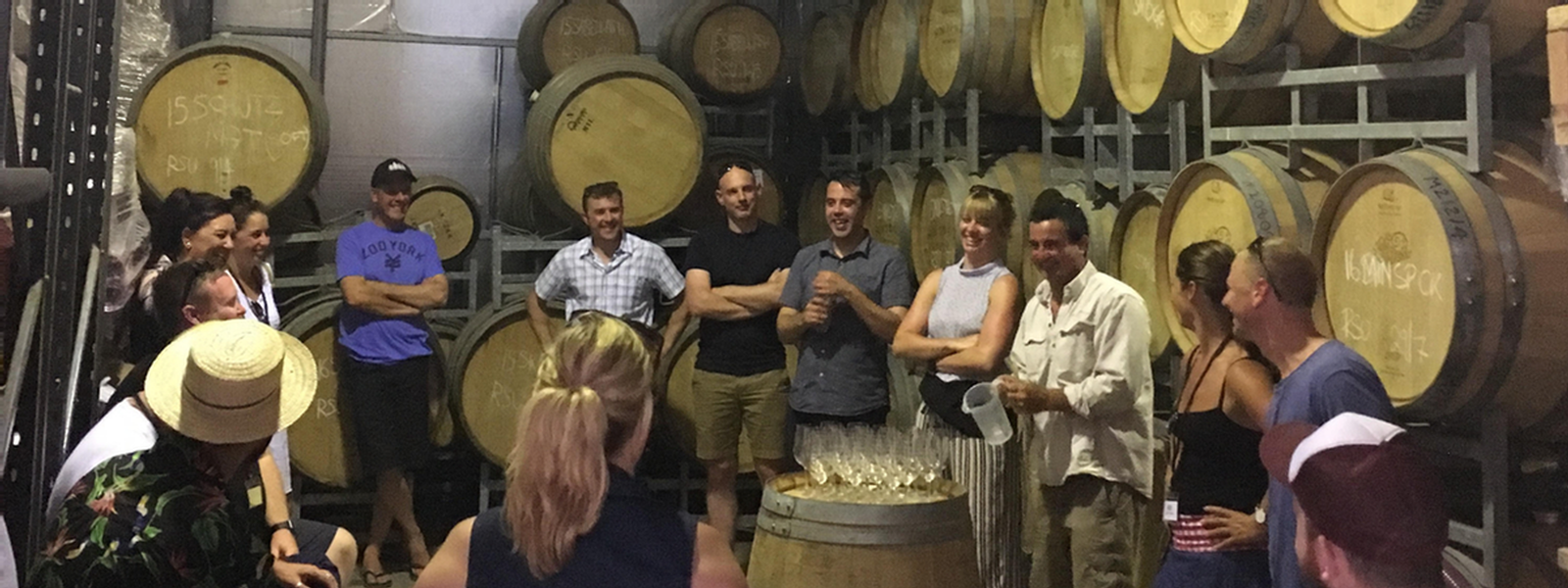
What do you drink at home?, Do you drink your own wine? – As a winemaker at the Cellar door, or at nearly any social situation I can think of I am almost always asked these questions. The follow up question is often ‘Do you ever get to enjoy wine – or is always work?’.
The first part of my answer can be jarring – sometimes I don’t drink wine at all! After a day of barrel trials, or tasting I’ll often have a cold beer or sparkling water – to cleanse the palate, refresh, hydrate and reset.
Then there are the nights I’ll bring home a trial blend to try with dinner, or dust off an old vintage to see how it is faring – testing closures, storage and generally how it is developing relative to my expectations of that vintage.
Equally, I love trying the efforts of someone else’s blood, sweat & tears. Both locally & internationally, I enjoy comparing vintages, varieties & styles and see how we compare. Then there are the times we’ll open a special bottle whether it is a cheeky glass of fizz or something else we’ve collected along the way – it might be for a celebration or just because.
I’m also a fan of trying anything I can get that is a little different no matter where it is from or what variety it is. It’s important to me to understand what is happening and not to restrict my frame of reference to what I make, and like to drink.
More recently after a visit from a generous mixologist at the cellar door I’ve been playing with some cocktail style drinks using wine (currently Muscat) as a base – it’s early days and I’ve had more misses that hits – but I’m enjoying the challenge – Watch out – there’s more to come here.
And to answer ‘is it always work?’ Absolutely not! How can drinking something delicious with good food and good friends be work? As the saying goes - If you love what you do you’ll never work a day in your life!’.
Are these crystals in my red wine "Diamonds on the Inside"?
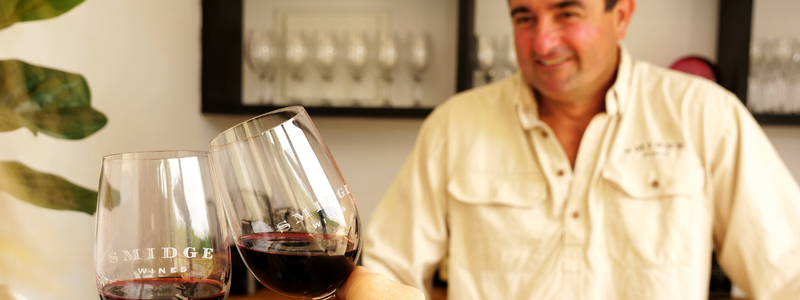
Well, in a nutshell, yes. These crystals form from tartaric acid that overtime ‘fall out’ of the wine and are called "tartrates". Their presence does not mean there is something faulty or wrong with the wine – in fact we feel it is quite the opposite.
Briefly, tartaric acid is the predominant natural, harmless acid in grapes and subsequent wine. It plays a vital role in the stability, pH, colour, structure and taste of finished wine.
A part of tartaric acid’s solubility is temperature dependent, as such when a wine is chilled for an extended period, the unstable form of tartaric acid will "crystallise" and precipitate out creating crystal deposits or ‘tartrates’. These tartrates often capture varying levels of colour and tannins in them.
During the aging process in the barrel a portion of the unstable tartrates precipitate out binding to the walls of the barrel. Once emptied, the barrels are steamed and /or washed to remove the tartrates and lees, although some remain dissolved in the wine and may precipitate out later in the bottle over time forming what often is referred to as a "crust".
So why do not all red wines have these crystals? Well some may be too ‘young’ and not enough time has elapsed for the crystals to form, or the conditions have not been conducive, or maybe the wine has minimal unstable tartaric acid remaining at the time of bottling due to the variety or season. Alternatively, some wineries may, for aesthetics, decide to remove all crystals through a process known as cold stabilisation. Prior to bottling, the wine in question is chilled to a sub zero temperature for a prescribed period to force the unstable tartrates to precipitate.
What about Smidge Wines? As a specialist winery, handcrafting wine of extraordinary quality in small quantities we view the presence of tartrates as showcasing our winemaking philosophy in action.
We believe that each intervention and action we make throughout the journey of every wine is done balancing the risk of action against the benefit to quality, flavour & stability. We view that no matter how carefully it can be done, artificially cold stabilising will change pH and acidity, and independent of the number of trials that can be done, it risks having some influence on the balance, structure, hue and flavour of a final wine. Sometimes these changes can be subtle, other times more noticeable.
We prefer to avoid this risk, and allow these interactions to occur naturally in the bottle over a number of years. So to answer the question – yes, we think these crystals are definitely diamonds!